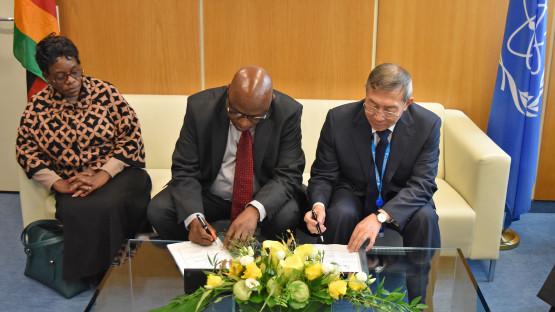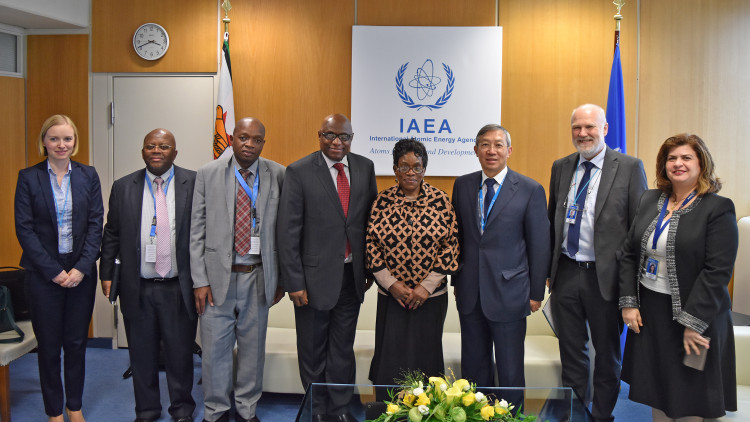Mr Taonga Mushayavanhu, Ambassador, Permanent Representative to the United Nations and the World Trade Organization, and Mr Dazhu Yang, IAEA Deputy Director General and Head of the Department of Technical Cooperation, signed Zimbabwe’s Country Programme Framework (CPF) for the period of 2017–2021 on 20 September 2017. A CPF is the frame of reference for the medium-term planning of technical cooperation between a Member State and the IAEA and identifies priority areas where the transfer of nuclear technology and technical cooperation resources will be directed to support national development goals.
Zimbabwe has been an IAEA Member State since 1986. Its 2017–2021 CPF identifies six priority areas:
- Food and agriculture – Improvement in capabilities for the early and rapid diagnosis and molecular epidemiology of animal diseases, vaccine production, and animal genome analyses for the selection of superior animals for breeding. Efforts will also be intensified to address climate change effects and drought issues through optimizing soil, water and nutrient use, and soil fertility improvement.
- Human health – Continued training and quality assurance in nuclear medicine and radiotherapy, as well as nutrition intervention programmes for vulnerable groups such as pregnant women and children.
- Water resources management - Focus will be on building capacity to enable the application of isotope hydrology for water resources assessment, development and monitoring.
- Energy development - Capacity building to further enhance energy planning skills and capabilities of the country.
- Radiation safety and regulatory infrastructure - Strengthening public exposure control capabilities through improved radioactive waste management and environmental monitoring.
- Industrial applications – Continued assistance to develop a non-destructive testing training and certification centre to improve the quality of services and products.




